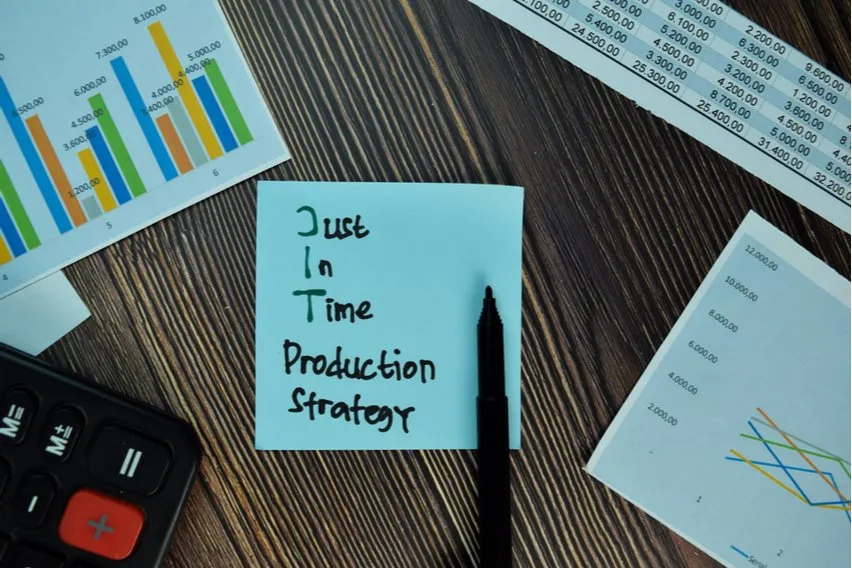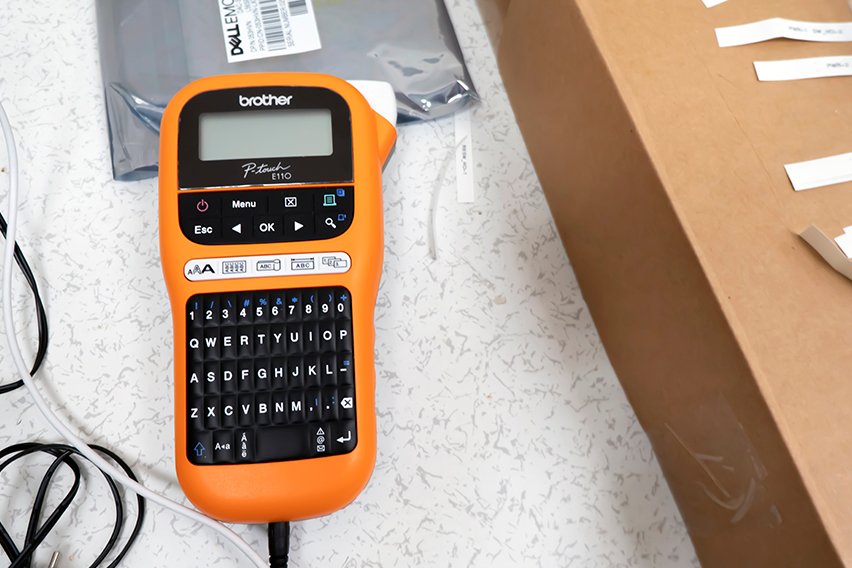JIT: What Is Just in Time Inventory Management System?

Just-in-time inventory management will help lower your inventory costs and reduce waste. All while increasing efficiency.
A just-in-time inventory management system is a strategy to keep costs down, reduce waste and increase efficiency. The just-in-time inventory strategy works by only receiving new products when they’re needed. This way, you don’t have unsold inventory sitting idly on your shelves.
By minimizing the inventory you have, inventory storage costs will go down. You will be able to process inventory for the products and materials that you do have. For this strategy to work you need to have consistent manufacturing and reliable suppliers.
Here’s What We’ll Cover:
How Does a Just-in-Time Inventory Management System Work?
What Are the Benefits of Using Just-in-Time Inventory?
Can Just-in-Time Inventory Work for You?
How Does a Just-in-Time Inventory Management System Work?
When you deal directly with suppliers and have to stay within certain production schedules, it can be difficult to ride any ebbs and flows. Sometimes sales are soaring and your product is flying off the shelves. Other times you can be left with excess inventory levels and raw materials and no way to get rid of them.
Implementing a just-in-time inventory management system makes the entire supply chain more efficient. And that includes the manufacturing process. This way, your inventory costs can be cut by reducing the amount of finished product you have on hand.
You won’t be left with extra inventory if an order isn’t fulfilled or ends up canceled.

Ways to Reduce Costs
The only concern your customer has is whether or not their purchase will perform the way they want it to. When looking for ways to help reduce inventory costs, think about value-added and non-value added activities. The extra inventory you have sitting in your warehouse space is non-value added.
Forecast any upcoming trends and lower your investment in the inventory you have. When you reduce the amount of space you need to store all your inventory, you reduce the risk.
What Are the Benefits of Using Just-in-Time Inventory?
There’s no need to have warehouse space to store all your inventory or spend huge amounts to get raw materials for production. By doing this, you’re able to maximize cash flow and put it towards other areas of your business.
When you avoid the waste that comes with overproduction, waiting for more material or having excess inventory won’t be as common. You order what you need and only when you need it. The entire process becomes more efficient, leaving you with a significant cost reduction.
Are There Any Risks?
There are always risks when it comes to managing inventory and figuring out your production process. What if sales increase without any notice and you don’t have enough product to fill orders in time? What if there’s a major disruption in your supply chain? Did consumer demand fall?
Those are good questions to ask yourself. It only takes one supplier who can’t deliver to disrupt your production. For a just-in-time inventory system to work, it requires properly forecasted expectations. Steady production, error-free machinery, good workers, and reliable suppliers will all play a role in reducing any risks.

Can Just-in-Time Inventory Work for You?
There are some details you can look into to better prepare and make a just-in-time delivery system work for your customer demand. Here are 3 things to keep in mind!
- Build reliable relationships with suppliers and vendors. Search for suppliers and vendors that have a reliable reputation. That way your supply chain becomes as seamless as possible and there are no unexpected delays.
- Track your sales data. Look for changes in demand and different seasonal trends. This will assist you in ordering the appropriate amount of product at the right time.
- Leverage inventory management software. Real-time tracking can give you specific details that help you forecast effectively. It will give you the time you need to replenish your inventory.
Key Takeaways
When the cost of inventory is low, there’s less risk of having more product on hand than you can sell. Inventory control management strategies don’t only reduce your expenses. They will free up storage space and more cash to divert to other areas of your business for higher customer satisfaction.
Take a look into some areas that might be contributing to the non-value-added inventory costs. Know your sales data and have reliable relationships with manufacturers. This will help you make better forecasts for what you need and when you need it. And ultimately, you will have a larger profit margin and greater return on investment.
Did you find this article helpful? If so, check out our post on Inventory Management Systems for Small Businesses. It provides insights on improving tracking and stocking capabilities, giving you better control over your inventory.
RELATED ARTICLES

 4 Best Barcode Generator Software in 2024
4 Best Barcode Generator Software in 2024 Time and a Half: What It Is & How to Calculate It?
Time and a Half: What It Is & How to Calculate It? 6 Email Etiquette Tips Every Professional Should Know
6 Email Etiquette Tips Every Professional Should Know What Is a CSV File? Learn How to Open, Edit & Create a CSV File
What Is a CSV File? Learn How to Open, Edit & Create a CSV File Printing Deposit Slips: A Step-by-Step Guide
Printing Deposit Slips: A Step-by-Step Guide How to Print Checks at Home for Your Business
How to Print Checks at Home for Your Business